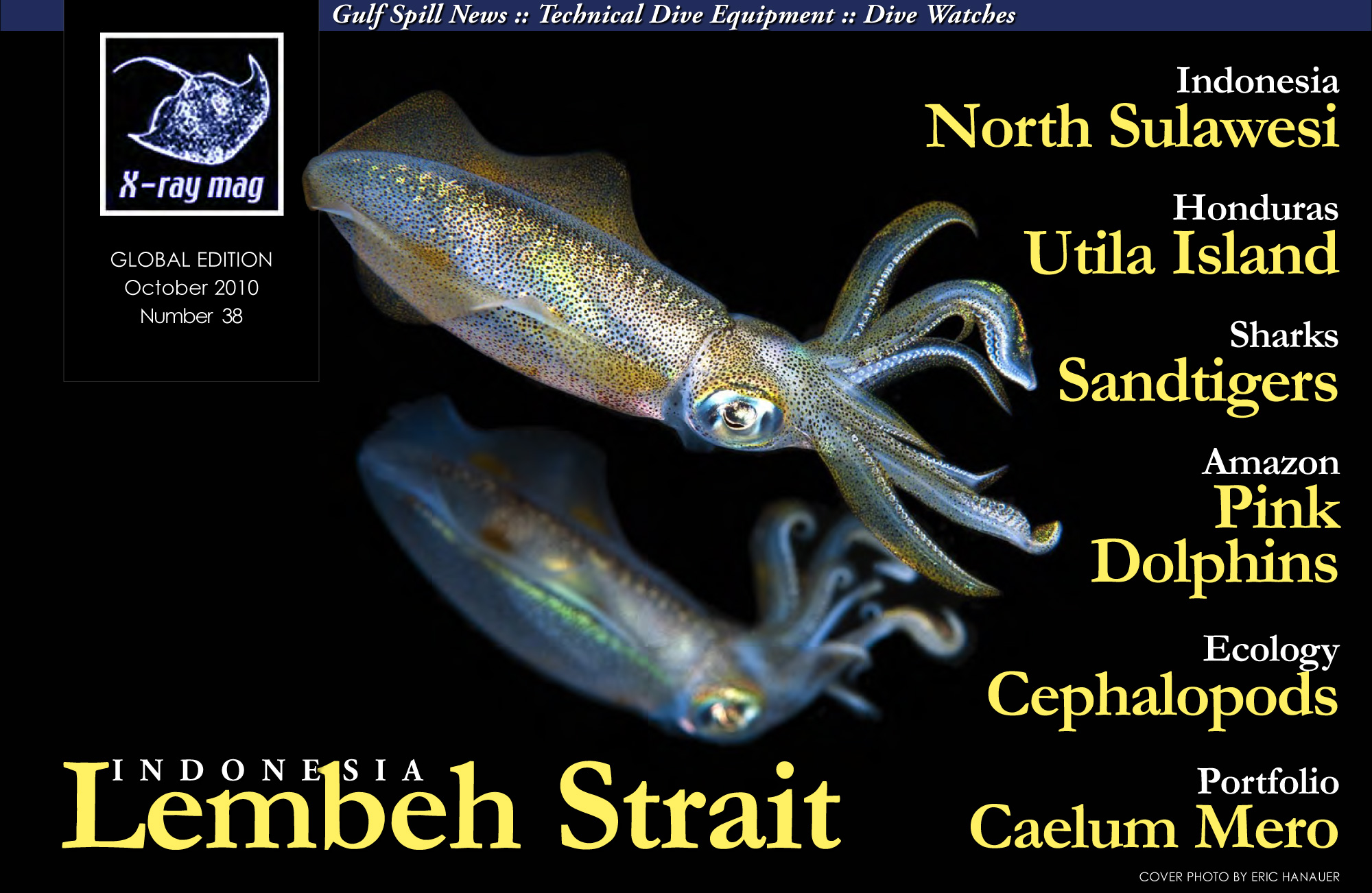Underwater fashion photographer, Caelum Mero of Australia, has developed a unique personal style that is fun, fabulous and poetic. He invites us into an underwater realm of mystery, magic and grace. X-RAY MAG’ s Gunild Symes caught up with him to find out the story behind his inspiration.
X-Ray Mag #38
Feature articles in this issue with stand-alone pdfs
Most cephalopods—the group in which scientists classify octopuses, squid, cuttlefish and nautiluses—can change color faster than a chameleon. They can also change texture and body shape, and if those camouflage techniques don’t work, they can still “disappear” in a cloud of ink, which they use as a smoke-screen or decoy.
Now, we have our camera and all of its ancillary added on bits. We have checked that everything works. We have our chosen format decided. We have our laptop and portable hard drive all packed up and ready to go on location, but where are we going and why go there in the first place?
For centuries, the Diamond Shoals off North Carolina have been collecting shipwrecks. Hundreds of crumpled merchant vessels swamped by Mother Nature’s fury and scores of battle scarred war machines torn apart by enemy shells loom above the otherwise featureless substrate.
For centuries, the Diamond Shoals off North Carolina have been collecting shipwrecks. Hundreds of crumpled merchant vessels swamped by Mother Nature’s fury and scores of battle scarred war machines torn apart by enemy shells loom above the otherwise featureless substrate.
Sulawesi is one of those places on nearly every diver’s bucket list. If not, it ought to be. A dozen years ago, people would have thought you daft to go diving there, much less build a dive resort in an area dominated by dark volcanic sand. Yet in Sulawesi there are nearly two dozen resorts vying for divers’ dollars, yen and euros.
The equipment used by technical divers differs considerably from that used by recreational scuba divers. Even when it appears similar, the technical diver will usually either carry more equipment or configure it slightly differently. In this article, we will look at the different equipment configurations used by technical divers, the reason for those differences and also whether there are any lessons recreational divers can learn from these configurations.
When combined with a poor choice of equipment placement or a lack of storage space, the diver can end up looking like a Christmas tree with pieces of equipment randomly clipped on and dangling from every conceivable spot.
The equipment used by technical divers differs considerably from that used by recreational scuba divers. Even when it appears similar, the technical diver will usually either carry more equipment or configure it slightly differently. In this article, we will look at the different equipment configurations used by technical divers, the reason for those differences and also whether there are any lessons recreational divers can learn from these configurations.
When combined with a poor choice of equipment placement or a lack of storage space, the diver can end up looking like a Christmas tree with pieces of equipment randomly clipped on and dangling from every conceivable spot.
The Inia geoffrensis, more commonly known as the pink dolphin, is nicknamed locally as ‘Boto’ and resides in the waters of the Rio Negro. Although still poorly known, this species is considered the most intelligent of the five species of freshwater dolphins. The pink dolphin has a melon-shaped head, a thick and elongated back, a crest instead of a dorsal fin, and disproportionately large ventral fins and tail—all of which making it less refined than the common dolphin. Yet, when you see its agility and wild grace underwater, it makes you think of the legendary Amazons.
“If you’ve been to South East Asia, don’t bother with the Caribbean” is a phrase I’ve encountered many times over the last decade. Having done virtually all of my diving in Asia-Pacific, the region’s legendary diversity tends to leave one a tad spoilt. When you’ve dived exclusively in the world’s biodiversity hotspot, it’s all-too-easy to assume that other areas will suffer by comparison. However, when an opportunity arose to visit the island of Utila in Honduras, I was immediately intrigued.








